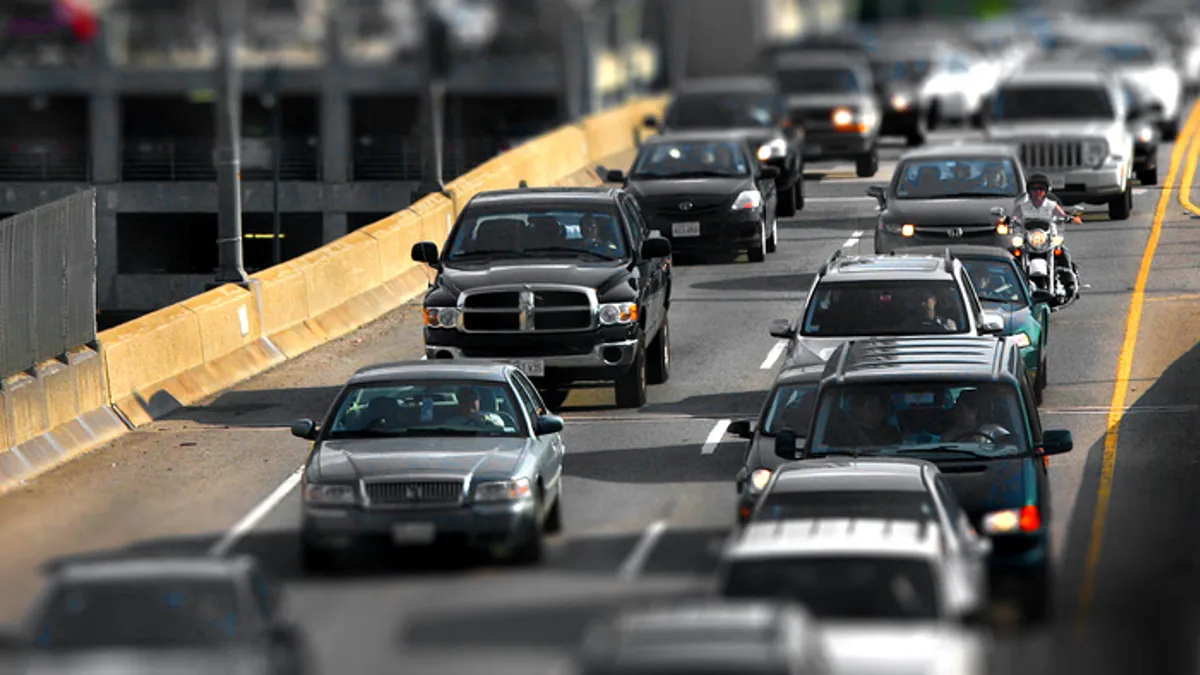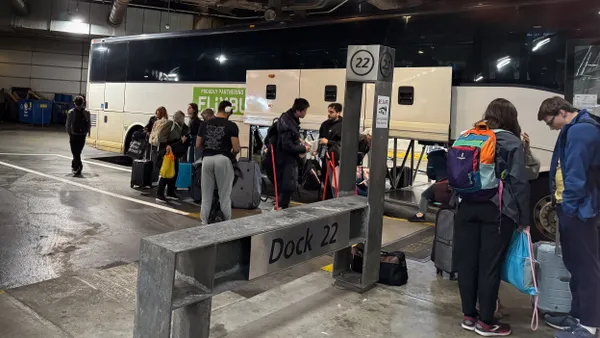Dive Brief:
- TomTom, a navigation and mapping company, released its 2017 Traffic Index earlier this year which measures traffic in 390 cities around the world. Using nine years of data, TomTom gave cities congestion scores by comparing how much extra travel time it took to make a trip compared to a traffic-free situation.
- Internationally, the city with the worst traffic is Mexico City. The list's most congested U.S. cities (in order) are Los Angeles, San Francisco, New York, Seattle, San Jose, CA, Miami, Portland, OR, Honolulu, Washington D.C., Boston, San Diego, Atlanta and Baton Rouge, LA.
- Traffic congestion is also up 23% globally since 2008, according to TomTom’s historical data. But rates of increase varied from continent to continent. From 2015 to 2016, North America, traffic increased 5% but Africa's increased 15%.
Dive Insight:
Los Angeles, which ranks 12th for the worst traffic globally, already has smart city projects in place to address traffic which indicates how much work still needs to be done to reduce congestion. Los Angeles drivers spend 44 minutes in traffic a day, on average — adding up to 170 hours per year — yet an increased focus on traffic mitigation citywide could cut down on this wasted time, increase dedicated time in the workplace and reduce harmful emissions.
Smart technologies have proven successful in many other cities. Despite ranking as the eighth on the global list, TomTom gave Rio De Janeiro the public transit award for its new bus rapid transit system and cable car service. The public transit, which was implemented for the 2016 Olympic Games, helped significantly decrease traffic in the two years that TomTom has collected data from the city. Additionally Pittsburgh, ranked 146th on the list, was singled out for its work in bringing autonomous vehicles (AVs) to the city. While some may be skeptical of the benefits of AVs, a recent study shows that human-created traffic can be significantly reduced or eliminated with as few as 5% of vehicles being automated on the roads.











